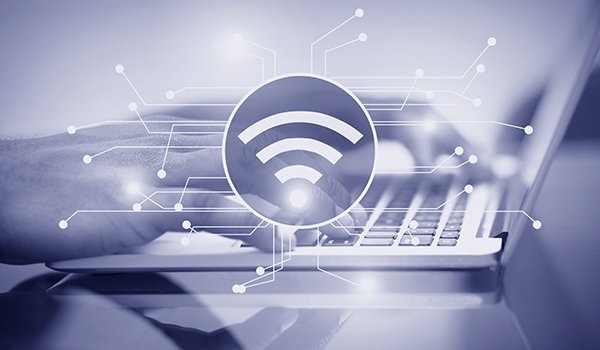Wi-Fi is a vital technology for students to stay connected. It allows them to submit assignments and reports, access online courses, and collaborate with peers from remote locations.
However, if you have yet to roll out and manage your University Wi-Fi network correctly, it may give students a bad experience.
Streamlined Management
Modern campus Wi-Fi solutions enable universities to connect and secure devices, students, and teachers across the entire university with ease. It includes student housing, classrooms, stadiums, recreational centers, and transportation systems. It helps streamline device and network management, reduces maintenance costs, and ensures a seamless user experience across the campus.
For example, one large university opted for an all-in-one wireless solution that replaced the need for individual modems in graduate student housing. The new solution provides a single login credential, enables simple account provisioning, and allows IT staff to manage bandwidth allocation to different student groups based on their course demands. It gives a media or broadcasting course student greater access than a history student.
The PCA of internet usage data gathered on University Wi-Fi networks reveals that users spend most of their time online engaging in distracting activities. It may reflect the impact of unsupervised activity on internet behavior compared to supervised activities such as work, study, or research. Distraction activity on the university Wi-Fi is dominated by websites controlled by technology companies that compete to keep our attention through intermittent variable rewards and platform designs that erode natural stopping cues and direct us away from the content we most value (i.e., education).
Practical strategies to reduce distracting internet activity and increase educational website use on university Wi-Fi could improve student well-being, academic performance, and student study satisfaction. Practical options to do this include filtering, blocking, or time-limiting non-educational websites.
Enhanced Security
Ubiquitous internet access enables students to collaborate with peers across campus and worldwide. Virtual field trips and real-time online quizzes help them learn in ways not available in textbooks, while working together on projects teaches valuable teamwork skills that employers value.
Internet for schools also helps students meet experts in their fields — and globally – through online forums, competitions, and webinars. They can also use social media to connect with classmates and alums for career networking and internship opportunities.
However, research shows that internet overuse for distracting activities can cause problems such as FOMO, loneliness, and reduced well-being – primarily when used on university Wi-Fi. The internet usage patterns identified on a University Wi-Fi highlight the need for strategies to manage problematic internet use, including time limiting, filtering, or blocking websites to limit distracting activity on university Wi-Fi.
Choosing Wi-Fi as a service eliminates the need to invest in hardware and allows network administrators to upgrade the system when technology improves or needs to be replaced, avoiding a lengthy deployment process and costly downtime for students and employees. It also reduces maintenance costs by eliminating the need to spend time troubleshooting and increasing productivity. It means fewer false starts and dead ends, reducing labor costs by 71%.
Reduced Maintenance Costs
Universities need to provide a stable and fast network to enable students to access educational content, research for assignments, collaborate with fellow students, video chat, and more. They must also manage data usage effectively with a solution allowing role-based access and filtering content for students, teachers, and staff.
This solution is significant for university students who often move around campus or live in a different part of the city or town and study at coffee shops, libraries, and other places with Wi-Fi. A secure passport solution can provide seamless authentication and connection across these locations and help students avoid stealing university credentials or jumping on non-secure networks that could put the whole university at risk of security breaches.
Recent research has identified a link between problematic internet use (PIU) and loneliness, anxiety, reduced well-being, and FOMO. It is feared that these impacts might negatively affect student academic performance. It was found that 79% of all internet activity analyzed on a University Wi-Fi network in an academic year was focused on distraction activity and websites managed by Google, Amazon, or Facebook. Practical options to address this include blocking, time-limiting, or filtering and encouraging users to redirect their attention toward education. An official taxonomy of website classification would aid it.
Longevity
The ability to connect to a high-speed Wi-Fi network helps students develop valuable teamwork skills, work from anywhere, and complete assignments at any time. It also allows them to stay engaged with their education and take advantage of the rich audio-visual online material that can’t be accessed in the classroom.
However, studies have shown that excessive internet distraction can cause stress. It could impact student well-being and lead to decreased academic performance. Therefore, universities must take practical steps to address this by implementing programs that educate students on PIU, training them on ways to find meaningful activities outside the internet, and developing a practice of internet abstinence. In addition, university Wi-Fi can filter, block and limit access to specific websites and sites known to be sources of distracting activities.
The global Wi-Fi service market is multiplying, fueled by the need for a seamless internet network and the increased adoption of IoT and innovative city projects. It is segmented by service, location type, enterprise size, and industry vertical. The managed services segment is expected to grow fastest; owing to the need for centralized management of wireless networks, it will help to reduce operational costs and improve the scalability of the network. The market is forecast to reach $19.9 billion by 2025 at a CAGR of 18.4%.
Also read: Skymovieshd







